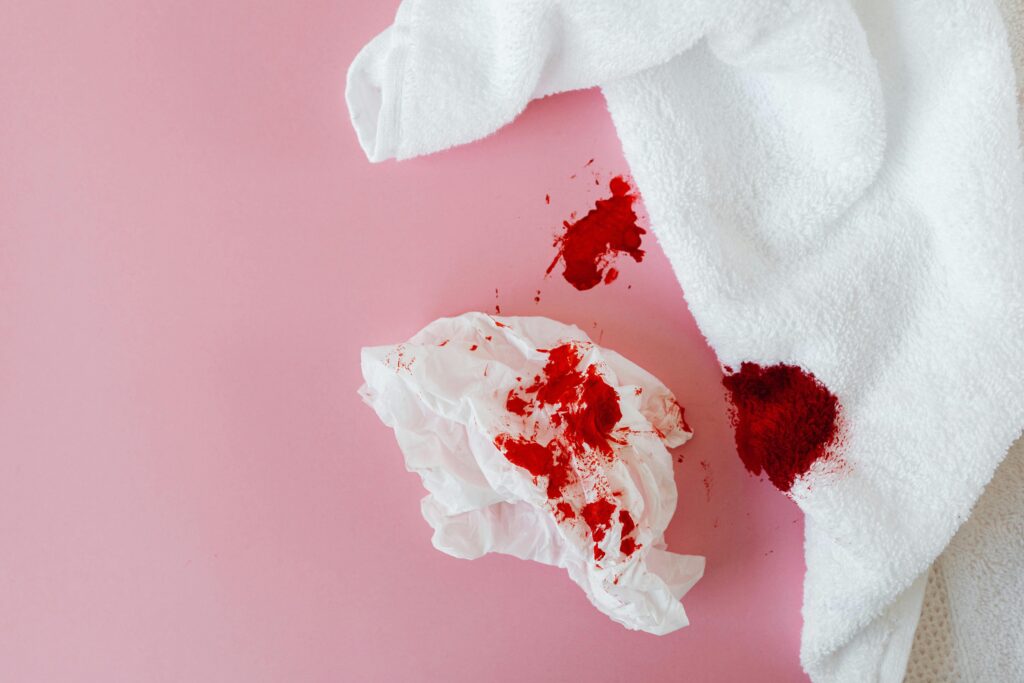Period poverty is the inability to manage one’s period due to a lack of menstrual products, water and sanitation facilities, and educational materials. This causes women, girls, and people who menstruate to experience shame and skip their everyday activities, such as school, work and leisure activities. Period poverty disproportionately affects people who already face economic difficulties, and operates in conjunction with- and is compounded by other forms of oppression and marginalization.
Period Poverty around the World
Period poverty is a complex issue experienced around the world, with over 500 million women* facing difficulties attending to their menstrual health (1). Taboos and myths about menstruation exist in most cultures and these are a huge obstacle to empowerment for menstruating individuals. This results in reduced access to information and education related to menstruation, which in turn exacerbates shame, humiliation and isolation.
Financial Weight of Menstruation
Menstrual products are expensive and prices are on the rise due to inflation, supply chain issues and high material and transportation costs (2). On top of the already-high cost of period products, hygiene products being a luxury, pain management comes at a high price, with over-the-counter pain medicine, heating pads and hot water bottles being yet another expense. The financial burden of periods increases when women and people who menstruate take time off work because they cannot work effectively given their symptoms. Some endure long-lasting pain that prevents them from working for days or weeks at a time. Shame and anxiety regarding periods can also result in avoiding the workplace (3).
Women and trans, non-binary, and gender-diverse people already face higher rates of poverty (4). Accessing healthcare and other supportive resources can be a challenge, and the high cost of periods exacerbates this. Indeed, many forego purchasing essential items like groceries to afford hygiene products (5). People also resort to unhygienic and unsafe alternatives. This includes using menstrual products for longer than recommended or using objects such as socks, newspaper or toilet paper, which can lead to discomfort, irritation and infection.
Community-based organizations are important for meeting local needs when it comes to menstrual product distribution. However, they are often underfunded and rely on irregular donations to support their community. For this reason, they cannot provide a comprehensive choice of products in necessary quantities. Those who rely on free product distribution – often people experiencing homelessness – can find themselves trapped in a vicious cycle, as their inability to meet basic needs exacerbates their precarious situation (6).
Paths Forward
Here in Canada, one in four women* are affected by menstrual poverty. Policies supporting menstrual equity are slowly gaining traction (7). In 2019, British Columbia pledged to provide free menstrual products in public schools, and Ontario followed suit in 2021 (8, 9). However, these remain the only province-wide efforts in place. In 2022, the federal budget allocated $25 million to combat period poverty, aiming to distribute products to vulnerable populations and support education initiatives (10). In December 2023, the Canadian government started supplying federally regulated workplaces with free products (11). Across the nation, individual school boards and districts distribute products, but efforts remain very inconsistent across the country, making access to products ad hoc.
Ending period poverty means ensuring people of all backgrounds have access to affordable menstrual products of their choice, facilities to care for their menstrual hygiene and high-quality resources. It’s crucial to get a thorough understanding of our most vulnerable populations to address their needs by gathering data on individual experiences and working with community-based organizations that have first-hand insight. By including local representation in policy-making, funds can be allocated to create a positive and sustainable impact.
Canadians need a comprehensive federal sex and reproductive health program to ensure all students get proper menstrual education, and this can be best achieved through the school system (12). The public perception of periods won’t change overnight, but fostering open conversations will help eliminate myths and misconceptions. Public campaigns can raise awareness of the issue among the wider population and empower individuals who do and don’t menstruate alike.
Many Canadian brands that create sustainable and non-toxic period products are fighting for menstrual equity. They are working to increase the free distribution of products and provide solutions for workplaces, schools and other institutions. Regardless of one’s financial background, being surprised by one’s period can be destabilizing, and it’s important to be able to access products hassle-free.
Monthly Dignity partners with members of the Montreal community and beyond to provide menstrual products to people in vulnerable situations and share educational tools to destigmatize menstrual experiences.
* This statistic focuses on cisgender women and does not encompass the experiences of trans, non-binary and gender non-conforming people who menstruate.


